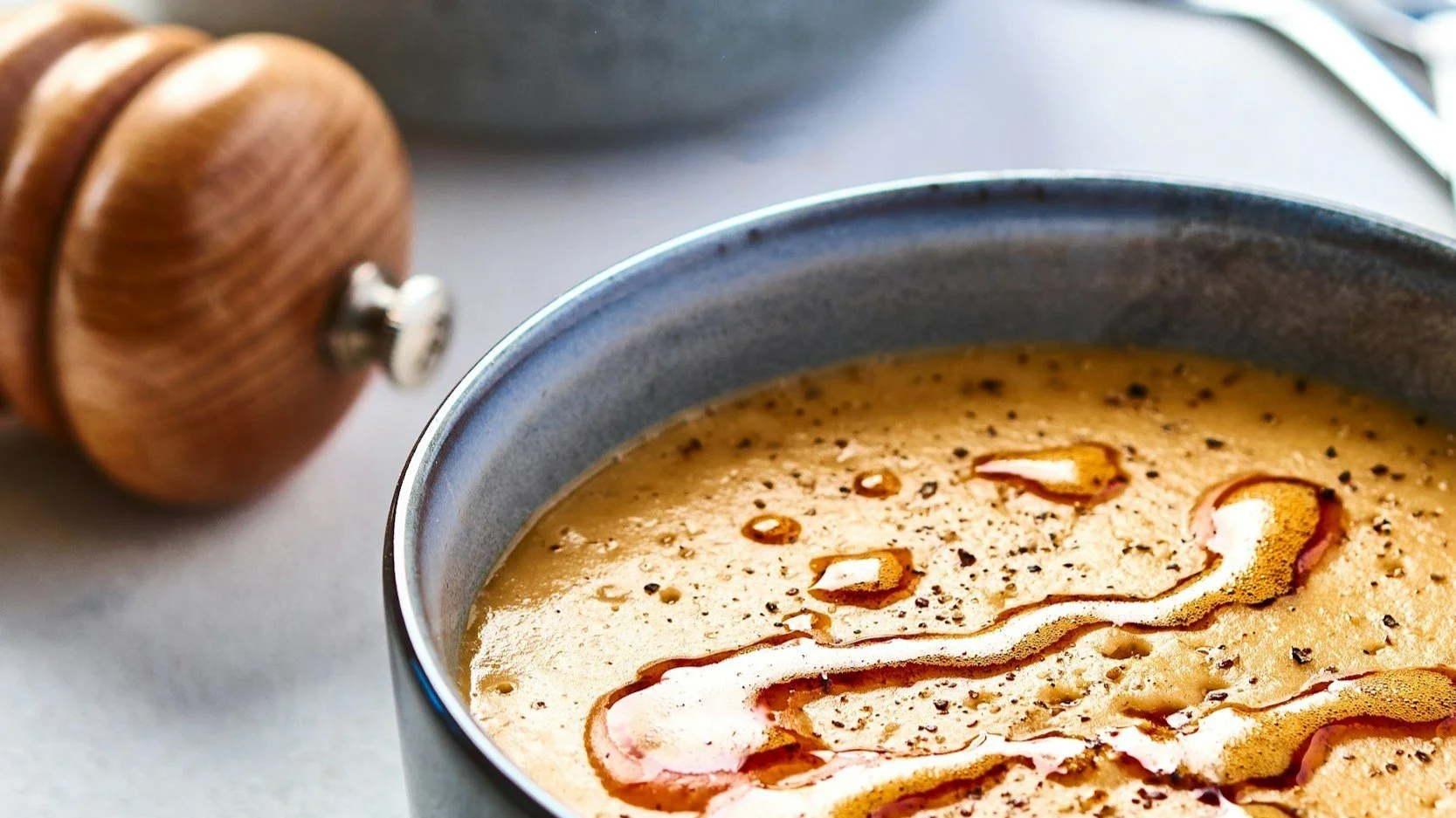Crafting Your Anti-Inflammatory Menu for Menopausal Joints (Part 2!)
Welcome back! In our previous post, "Ease the Ache: Your Ultimate Food Guide to Soothing Joint Pain During Menopause (Part 1)," we delved into why joint pain often increases during menopause due to hormonal shifts, and the powerful role of an anti-inflammatory diet. We covered the key anti-inflammatory foods to embrace and the common culprits to limit for happier, healthier joints.
Now, it's time to translate that knowledge into action! This second part of our guide is all about giving you practical, delicious, and diverse recipe ideas to help you implement an anti-inflammatory eating plan that specifically supports your joints during menopause. Making dietary changes takes time and consistency, and having a variety of appealing meals is key to long-term success.
Remember, consistency is key. Start by gradually incorporating more anti-inflammatory foods and reducing inflammatory ones. Keeping a food and symptom journal can be incredibly helpful in identifying specific triggers and tracking your progress.
Delicious Recipe Ideas to Soothe Menopausal Joint Pain
Here are some diverse and delicious meal ideas that are packed with ingredients to help reduce inflammation and support your joints:
Breakfast Ideas:
Turmeric Scrambled Eggs with Avocado & Whole-Grain Toast:
Why it helps: Turmeric is a powerful anti-inflammatory. Eggs provide protein, and avocado offers healthy fats.
Recipe: In a frying plan, scramble eggs with a generous pinch of turmeric, a dash of black pepper (to enhance turmeric absorption), finely diced onions, bell peppers, and spinach until heated through. Serve alongside a slice of toasted whole-grain bread topped with sliced avocado.
Chia Seed Pudding with Blueberries & Walnuts (or seeds):
Why it helps: Chia seeds are packed with Omega-3s and fiber. Blueberries are rich in Vitamin C and antioxidants. Walnuts offer healthy fats
Recipe: Combine 3 tablespoons chia seeds with 1 cup unsweetened almond milk (or other plant milk), 1/2 teaspoon vanilla extract, and a touch of maple syrup . Shake well and refrigerate overnight. In the morning, top with blueberries and a sprinkle of chopped walnuts.
Lunch Ideas:
Hearty Lentil & Vegetable Soup:
Why it helps: Lentils are excellent sources of fiber and plant protein, while a variety of vegetables provide essential vitamins and antioxidants. A warm soup can also be soothing.
Recipe: Sauté chopped carrots, celery, onion, and garlic in a pot with a little extra virgin olive oil. Add 1 cup brown or green lentils (rinsed), 6 cups vegetable broth, a can of diced tomatoes, and spices like ginger, thyme, and a bay leaf. Simmer until lentils are tender. Stir in a few handfuls of fresh spinach before serving.
Quinoa Salad with Roasted Vegetables & Chickpeas:
Why it helps: Quinoa is a complete protein and whole grain. Roasted vegetables retain nutrients, and chickpeas add fiber and plant-based protein.
Recipe: Roast chopped zucchini, bell peppers, red onion, and cherry tomatoes with a drizzle of olive oil and herbs like rosemary until tender. Cook quinoa according to package directions. Combine the roasted vegetables, cooked quinoa, and a can of drained and rinsed chickpeas. Dress with a lemon-tahini dressing (tahini, lemon juice, water, a little garlic).
Dinner Ideas:
Baked Cod with Asparagus & Quinoa Pilaf:
Why it helps: Cod is a lean source of protein and provides some Omega-3s. Asparagus is rich in antioxidants and Vitamin K.
Recipe: Season cod fillets with lemon, garlic powder, and a little dill. Bake until flaky. Roast asparagus spears alongside with a drizzle of olive oil. Serve with a quinoa pilaf made with vegetable broth and finely diced carrots.
Chicken and Vegetable Skewers with Brown Rice:
Why it helps: Lean protein from chicken, colourful vegetables for antioxidants, and brown rice for whole grains.
Recipe: Cut chicken breast into cubes and marinate in a mixture of olive oil, lemon juice, ginger (grated), garlic (minced), and a pinch of turmeric. Thread chicken pieces alternately with chunks of bell peppers, zucchini, and cherry tomatoes onto skewers. Grill or bake until chicken is cooked through and vegetables are tender-crisp. Serve with a side of steamed brown rice.
Snack Ideas:
Greek Yogurt with Berries & Hemp Seeds:
Why it helps: Greek yogurt provides protein and probiotics for gut health. Berries are antioxidant powerhouses, and hemp seeds offer healthy fats.
Recipe: Layer plain Greek yogurt with mixed berries (fresh or thawed frozen) and sprinkle generously with hemp seeds (which also contain good fats).
Edamame Pods (Steamed):
Why it helps: Edamame is a fantastic source of plant-based protein, fiber, and phytoestrogens, which can be beneficial during menopause.
Recipe: Simply steam frozen edamame pods until tender. Enjoy them warm, popping the beans directly from the pod.
Celery Sticks with Almond Butter & Chia Seeds:
Why it helps: Celery is hydrating and contains some anti-inflammatory compounds. Almond butter provides healthy fats and protein, and chia seeds boost Omega-3s.
Recipe: Spread a thin layer of natural almond butter onto celery sticks and sprinkle with chia seeds.
The Takeaway
Adopting an anti-inflammatory diet is a powerful step towards managing joint pain during menopause, and it's also a fantastic way to boost your overall health and well-being. As you incorporate these delicious, nutrient-rich recipes into your routine, you'll actively support your body in reducing inflammation, improving joint health, and ultimately moving with greater comfort and ease. Experiment with these ideas, discover your favorites, and enjoy your journey to a more comfortable you!
The Takeaway
Living with joint pain during menopause doesn't mean resigning yourself to discomfort. By making conscious and consistent dietary choices, you can actively reduce inflammation, support joint health, and significantly improve your quality of life during this important life stage. This is about more than just managing symptoms; it's about nourishing your body from the inside out and empowering yourself to move with greater ease and less pain. Your joints – and your overall well-being – will thank you!
Want more Help to Start Easing the Aches and other Menopause Symptoms Naturally?
Why not download our free 7 Days to Healthier Hormones Guide to get you started. It’s designed to gently help reduce inflammation, nourish your body, and give your hormones the support they need to ease symptoms like hot flushes, joint pain, stiffness, and bloating and other digestive issues too.
Inside you’ll get:
An easy-to-follow hormone-supportive meal plan
Anti-inflammatory recipes that help calm the system
Daily tips to support detox, lower stress, and feel more like yourself again
Ready to give your body the reset it’s craving? Download your copy here: 7 Days to Healthier Hormones Food Guide
Because moving through menopause shouldn’t have to hurt and sometimes, the smallest shifts can bring the biggest relief.
Disclaimer:
At Hello Mimi, we’re here to support and empower you with education, encouragement, and practical tools but we’re not a substitute for personalised medical advice. The information in this blog is for general guidance only. Always consult a qualified healthcare provider before making changes to your health, diet, or supplements especially if you're managing a condition or taking medication.

